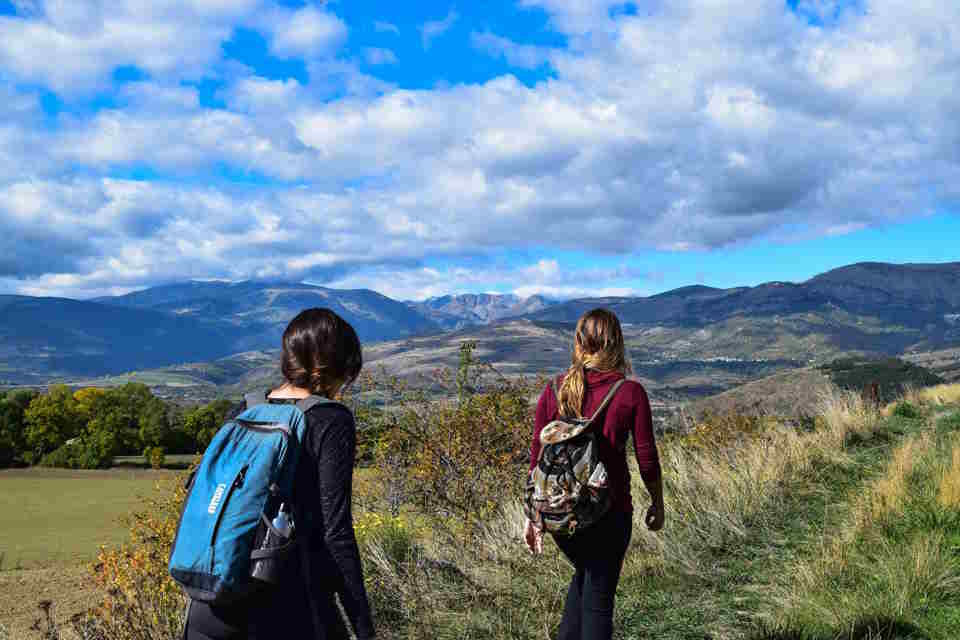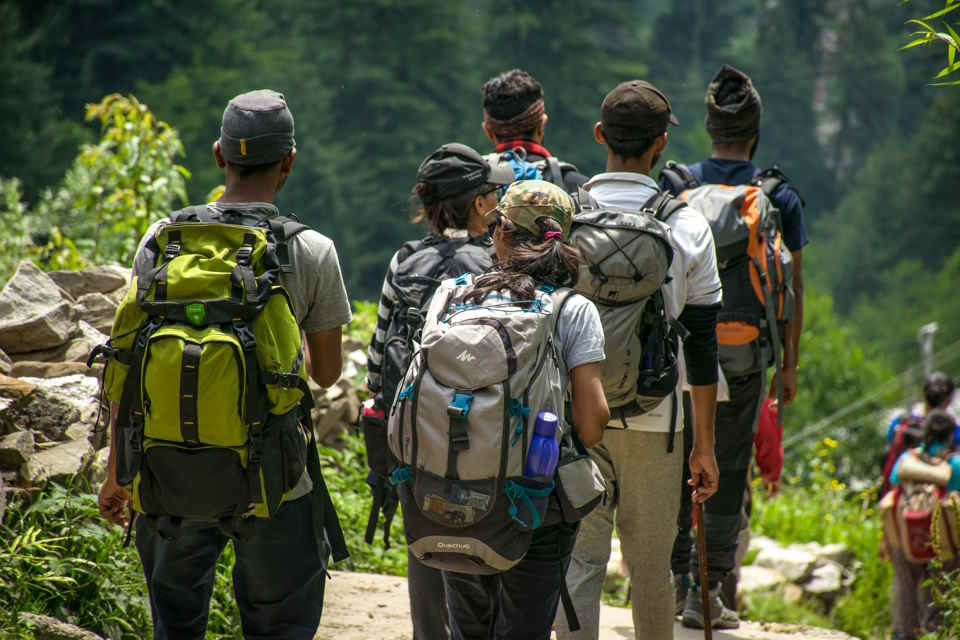Hiking is a popular outdoor activity that offers numerous health benefits, including cardiovascular conditioning, stress reduction, and improved mental wellbeing. But have you ever wondered if hiking can also help build muscle? In this blog post, we will explore the impact of hiking on muscle development and discuss the various ways in which it can contribute to building and maintaining muscle mass. From understanding the benefits of hiking to incorporating resistance training into your hikes, we will delve into the science behind hiking and its effects on muscle growth. We will also discuss the nutritional considerations for hikers and how to maximize muscle growth with hiking. Whether you’re an avid hiker looking to enhance your muscle development or someone interested in the potential benefits of this enjoyable activity, this post will provide valuable insights into the relationship between hiking and muscle building.Discover the benefits of hiking, its impact on muscle development, incorporating resistance training, nutritional considerations, and tips for maximizing muscle growth.
Understanding The Benefits Of Hiking
Hiking is a popular outdoor activity that offers numerous benefits for both physical and mental health. Engaging in regular hiking can improve cardiovascular fitness, strengthen muscles, and enhance overall endurance. It is also an excellent way to enjoy the beauty of nature and reduce stress levels.
One of the main benefits of hiking is the opportunity to connect with the natural environment. Being surrounded by trees, fresh air, and scenic landscapes can have a calming effect on the mind and help alleviate anxiety and depression. Additionally, hiking allows individuals to disconnect from technology and spend quality time in the outdoors.
Moreover, hiking is a cost-effective form of exercise that requires minimal equipment. All one needs is a sturdy pair of hiking shoes, appropriate clothing, and a backpack with essentials such as water, snacks, and a first-aid kit. Unlike other forms of exercise, hiking can be done in most outdoor environments, including mountains, forests, and national parks.
Furthermore, the social aspect of hiking can contribute to an individual’s mental well-being. Group hikes with friends or family members can provide a sense of community and foster camaraderie. This social connection can lead to improved mood and a sense of belonging.
Impact Of Hiking On Muscle Development
Hiking is a fantastic way to not only get closer to nature and enjoy the great outdoors, but it also has a significant impact on muscle development. When you’re out on the trail, your body is constantly working to navigate the rough terrain, climbing inclines, and carrying the weight of your backpack. This constant physical activity engages various muscle groups in your body, leading to improved strength and muscle tone.
One of the key benefits of hiking for muscle development is the engagement of your lower body muscles. While hiking, you’re constantly using your leg muscles to propel yourself forward and navigate the uneven terrain. This helps to build strength in your quadriceps, hamstrings, calves, and glutes. As you climb steep inclines or rocky paths, you also engage your core muscles to maintain balance and stability, leading to improved abdominal strength.
Additionally, hiking helps to develop your upper body muscles. Carrying a backpack during your hike adds resistance to your workout, which results in improved muscle endurance and strength in your shoulders, arms, and back. As you use hiking poles to navigate the trail, you also engage your arm muscles, contributing to overall upper body strength development.
Regular hiking can also lead to improved cardiovascular health, which in turn supports muscle development. When you’re out on the trail, your heart rate increases as you tackle various terrains and inclines, leading to improved blood circulation and oxygen delivery to your muscles. This helps to enhance endurance and stamina, allowing for longer and more challenging hikes that further contribute to muscle development.
Incorporating Resistance Training Into Hiking
Hiking is a fantastic way to get fit and enjoy the great outdoors. It provides a full-body workout, with particular emphasis on the lower body and cardiovascular system. However, for those looking to take their hiking to the next level, incorporating resistance training can be a game changer. By adding resistance exercises to your hiking routine, you can boost your strength, endurance, and muscle development.
One way to incorporate resistance training into hiking is to wear a weighted vest. This can add extra resistance to your hike, effectively turning it into a full-body workout. The added weight will engage your muscles more intensely, helping to build strength and endurance. Additionally, using trekking poles can also provide resistance, particularly for the upper body. By utilizing the poles to push and pull yourself along the trail, you can engage your arms, shoulders, and back muscles, effectively turning your hike into a resistance training session.
Another way to incorporate resistance training into your hiking routine is to find a trail with varied terrain, such as inclines and declines. Hiking uphill provides a natural resistance for your lower body muscles, while hiking downhill engages your muscles in a different way. By seeking out trails with diverse terrain, you can challenge your muscles in new ways and improve overall strength and endurance.
Finally, incorporating bodyweight exercises into your hike can also provide resistance training benefits. Find a scenic spot along your hike and take a break to perform exercises such as squats, lunges, or push-ups. By adding these exercises into your hike, you can target specific muscle groups and further enhance your overall strength and fitness.
Nutritional Considerations For Hikers
When it comes to hiking, proper nutrition is essential for maintaining energy levels and supporting overall health. The physical demands of hiking require a well-balanced diet that provides the necessary nutrients to fuel the body and aid in recovery. One key consideration for hikers is the need for a high calorie intake to sustain energy levels during long treks. This means focusing on nutrient-dense foods that provide a good balance of carbohydrates, protein, and healthy fats.
Carbohydrates are essential for providing the body with the energy it needs for physical activity. Hikers should focus on consuming complex carbohydrates such as whole grains, fruits, and vegetables, as these foods provide a steady source of energy that is released slowly into the bloodstream. Additionally, protein is important for muscle repair and recovery, so hikers should aim to include lean sources of protein such as chicken, fish, and legumes in their diet.
Another important consideration for hikers is staying properly hydrated. Dehydration can negatively impact performance and endurance, so it’s important to drink plenty of water before, during, and after a hike. In addition to water, hikers should also consider consuming electrolyte-rich beverages or snacks to replenish the minerals lost through sweat.
Lastly, hikers should pay attention to their micronutrient intake, particularly vitamins and minerals that are essential for overall health and performance. A diet rich in fruits, vegetables, and whole foods can help ensure that hikers are getting the necessary vitamins and minerals to support their hiking endeavors.
Maximizing Muscle Growth With Hiking
When it comes to maximizing muscle growth, hikers have a unique advantage. Hiking involves walking long distances over varied terrain, which engages multiple muscle groups and provides a full-body workout. This type of exercise can lead to significant muscle development, especially in the lower body and core muscles.
Incorporating hiking into your fitness routine can help you build and define muscles in your legs, glutes, and core. Uphill hiking requires more effort, which activates and strengthens the muscles in your calves, quads, hamstrings, and glutes. On the other hand, downhill hiking engages the muscles in your quadriceps, hips, and core as you stabilize and control your movements.
Furthermore, the uneven terrain of hiking trails forces your body to constantly adjust and adapt, leading to improved balance, stability, and coordination. This dynamic movement challenges your muscles in different ways than traditional strength training, promoting muscle growth and overall strength development.
By regularly incorporating hiking into your exercise regimen, you can maximize muscle growth and achieve a well-rounded level of physical fitness. In addition to the physical benefits, hiking also offers mental and emotional rewards, making it an ideal activity for those looking to improve their overall well-being.









